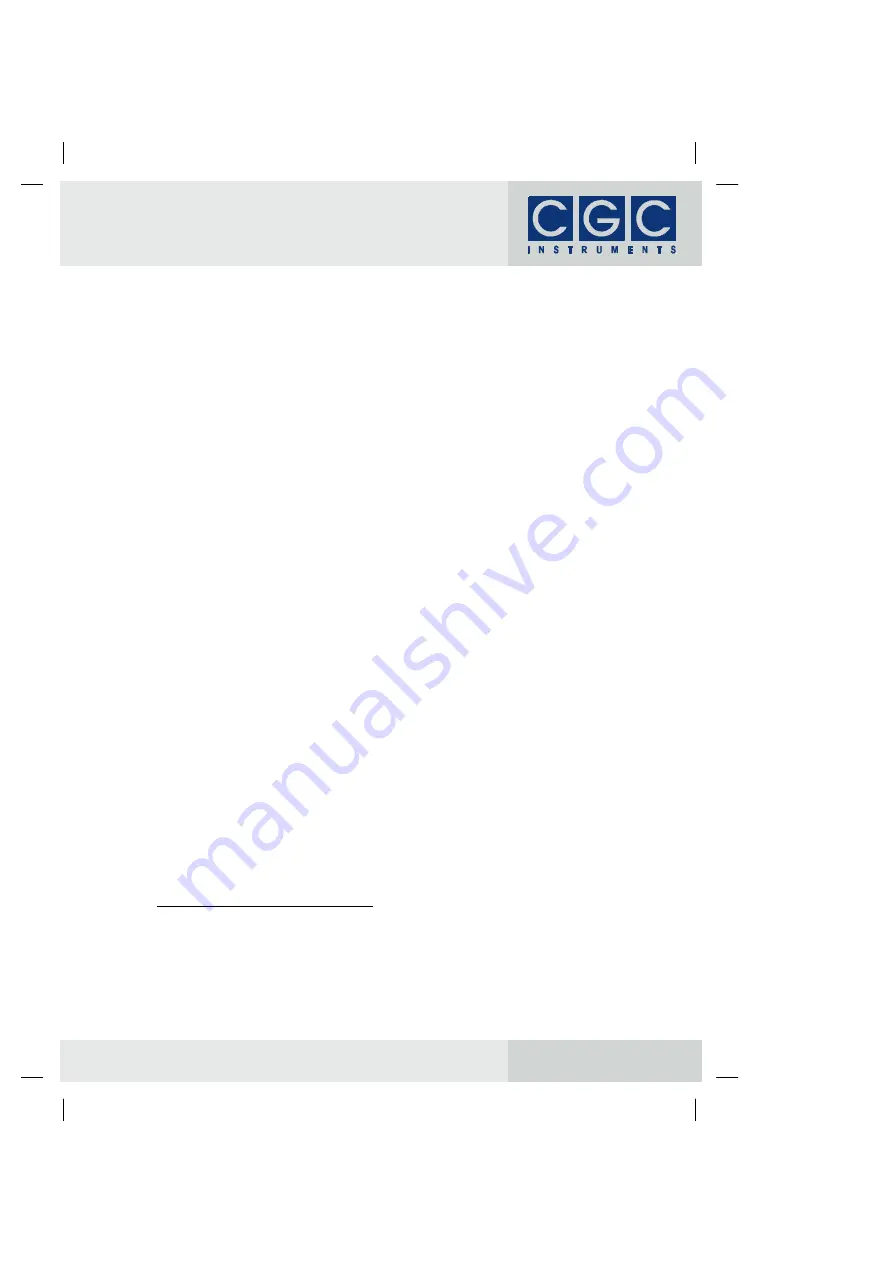
Page: 17/81 User Manual PSU-CTRL-2D, Rev.1-00: Software Utilities
CGC Instruments
Tel.: +49 (371) 355 098–55
Hübschmannstr. 18 | D–09112 Chemnitz
Fax: +49 (371) 355 098–60
internet: www.cgc-instruments.com
e–mail: [email protected]
Software Utilities
The software utilities can be found in the directory "Program" of the
enclosed software package. Before using them with a device with a
USB interface, the virtual USB port driver must be installed (see sec-
tion "Driver Installation"). The utilities do not require any additional in-
stallation, you only need to copy them to a suitable directory on your
computer.
Before starting the utilities, you need to obtain the number of the port
to which the device is connected. Devices with an RS-232 interface
have to be connected to a physical serial port (for instance COM1). In
Windows™ systems, you can find out its number using the device
manager. Devices with a USB interface use a virtual serial port for
communication. The details are described in the section "Driver Instal-
lation".
Utility COM-HVPSU2D-Control
COM-HVPSU2D-Control
is a Windows™ program that runs in text
mode. It enables you to control and monitor the pulse controller, man-
age its configurations, and backup and restore its data. Executing the
utility
COM-HVPSU2D-Control.exe
in a Windows™ command shell
without any additional parameters displays a help text with the list of
all available commands:
COM-HVPSU2D-Control
To start the program without any error messages, at least the number
of the COM port must be given as a parameter:
COM-HVPSU2D-Control 6
This command starts the utility
COM-HVPSU2D-Control
and as-
sumes that the device is connected to the (virtual) port COM6. When
successful, the utility displays the following message:
†
Press the Windows key + R to open the "Run" dialog box. Type "cmd" and press En-
ter, this opens a window with a command prompt. Then change the directory to the
one containing the program files using the command "cd". Finally, execute the given
command by copying & pasting and pressing "Enter". A better and more comfortable
alternative to the Windows™ command shell are utilities such as "Total Commander",
"File Commander/W", or "File and archive manager (FAR)". Please use an internet
search engine to find out how to obtain these applications.






















